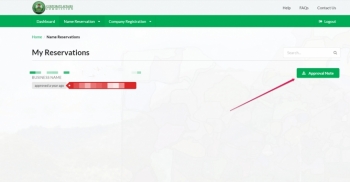News And PoliticsCommunications And EntertainmentSports And FitnessHealth And LifestyleOthersGeneralWorldnewsBusiness And MoneyNigerianewsRelationship And MarriageStories And PoemsArts And EducationScience And TechnologyCelebrityEntertainmentMotivationalsReligion And PrinciplesNewsFood And KitchenHealthPersonal Care And BeautySportsBusinessFamily And HolidaysStoriesIT And Computer ScienceRelationshipsLawLifestyleComedyReligionLifetipsEducationMotivationAgriculturePoliticsAnnouncementUSMLE And MedicalsMoneyEngineeringPoemsSocial SciencesHistoryFoodGive AidBeautyMarriageQuestions And AnswersHobbies And HandiworksVehicles And MobilityTechnologyFamilyPrinciplesNatureQuotesFashionAdvertisementChildrenKitchenGive HelpArtsWomenSpiritualityQuestions AnsweredAnimalsHerbal MedicineSciencePersonal CareFitnessTravelSecurityOpinionMedicineHome RemedyMenReviewsHobbiesGiveawayHolidaysUsmleVehiclesHandiworksHalloweenQ&A
Science And Technology
profile/1711PSX_20200322_135837.jpg
Ajiri

This May Be Your Only Chance At Owning An Iphone
~10.4 mins read
I initially snoozed through the announcement of the new SE. It's an iPhone SE, but it's not as small as the previous iPhone SE. And, yeah, at $399, it's relatively cheap. OK. Fine. Spec bump. Yawn.
But, then... I thought about the price/performance implications of this model.
Here's the TL;DR of this whole piece: This is the iPhone most people should buy. Period. Full stop. That's it. This is the mainstream iPhone. It's perfect for almost everyone but power buyers.
It completely changes the calculus of buying an iPhone.
A TAXONOMY OF IPHONE USERS
You can classify iPhone users in lots of different ways. For our purposes, let's break down iPhone consumers into three broad categories.
Our first category is what I'll call power iPhone users. This is the group of users that tech columnists usually write for because we fit into that category. These are folks who fully-equip their phones, have hundreds of apps, need every pixel of resolution because they're doing full spreadsheets on their phones, might actually film and edit a full video on their phones, and so on. To power users, an iPhone must be nothing less than a fully functional pocket laptop computer.
These folks are often willing to spend a lot on their phones because they truly rely on their phones as extensions of their productive selves.
The second category is the camera people. These are people for whom camera performance is essential. They're a bit different from power users in that the camera people care a lot about taking great pictures and video, but aren't trying to turn their iPhones into pocket laptops. While many of these folks are likely to own a DSLR, many of them have made the iPhone their primary camera, and care a lot about portrait mode, telephoto, wide-angle, and capturing both high-quality stills and video.
The third category is everyone else. For every die-hard camera person or power user, there are probably between 10 and a thousand everyone elses. These are the folks who post on Facebook, play games, send texts, take snapshots, use the GPS, and even make phone calls. They're happy if they have a good phone, but discussions of camera modes and video resolutions will make their eyes glaze over.
The new iPhone SE is for these folks. It's the Everyone Else phone.
Price comparison
Let's first look at pricing. iPhones can now be had for $399 all the way up to $1,449 -- the price of a well-equipped MacBook Air.
Early 2020 iPhone prices, compared
| SE 2020 | XR | 11 | 11 Pro | 11 Pro Max | |
|---|---|---|---|---|---|
| 64GB | $399 | $599 | $699 | $999 | $1,099 |
| 128GB | $449 | $649 | $749 | ||
| 256GB | $549 | $849 | $1,149 | $1,249 | |
| 512GB | $1,349 | $1,449 |
Note: The 2017 iPhone SE came with 16GB, 64GB, or 128GB. The iPhone 8 came with 64GB, 128GB, or 256GB
When the first generation iPhone SE came out in 2016, it started at $399 -- the same price as the new 2020 iPhone SE. The iPhone 8, which will loom large in this article, was introduced in 2017 with a base price of $699 As you can see, today's iPhone pricing goes up incrementally based on model, until you get to the iPhone 11 Pro. Then it takes a jump. That's because of the substantially higher-quality display and more powerful cameras.
We'll come back to cameras in a minute, but first, let's look at the fundamental characteristics of the iPhone models.
THE 2020 IPHONE SE IS A PROCESSOR-BUMPED IPHONE 8
Let's be clear. The 2020 iPhone SE is not a radically new model.
When the original iPhone SE came out, the big story was its small size. At 4 inches, it's the most powerful iPhone of its size. And while the price was important for the SE, the biggest draw was its size. There are people who have smaller hands or smaller pockets and want a small phone. For those people, the iPhone SE was an ideal option. It was also a new design, fitting what was essentially an iPhone 6s into a tiny case.
As you can see in the table below, the new iPhone SE is the same size as the iPhone 8. While 0.7 inches doesn't seem like much, it's still about one finger width. That could be enough to make the newer iPhone SE a little big for smaller hands, although it's still smaller than all the other currently-shipping iPhone models.
More to the point, with the exception of its processor, the 2020 iPhone SE shares nearly all of the characteristics of the iPhone 8. It's the same size, the same resolution, the same cameras, the same Touch ID, and at 5.2 ounces, it's even the same weight.
Here's how video resolution compares across currently shipping models.
Video resolution and processor comparison
| Size | Processor | Display Tech | Resolution | |
|---|---|---|---|---|
| SE 2016 | 4 inches | A9 | Retina | 1136x640 |
| iPhone 8 | 4.7 inches | A11 Bionic | Retina HD | 1334x750 |
| iPhone 8 Plus | 5.5 inches | A11 Bionic | Retina HD | 1920x1080 |
| SE 2020 | 4.7 inches | A13 Bionic | Retina HD | 1334x750 |
| iPhone XR | 6.1 inches | A12 Bionic | Liquid Retina HD | 1792x828 |
| iPhone 11 | 6.1 inches | A13 Bionic | Liquid Retina HD | 1792x828 |
| 11 Pro | 5.8 inches | A13 Bionic | Super Retina XDR | 2436x1125 |
| 11 Pro Max | 6.5 inches | A13 Bionic | Super Retina XDR | 2688x1242 |
THE CAMERA IS UNCHANGED FROM THE IPHONE 8
In the camera table below, you can see the new iPhone SE has the same camera specs as the iPhone 8. The big jump in camera spec and function comes when you get to the iPhone 11 models.
Camera comparison
| Rear | Telephoto | Ultrawide | Night Mode | Front | |
|---|---|---|---|---|---|
| SE 2016 | 12MP | 1.2MP | |||
| iPhone 8 | 12MP | 7MP | |||
| iPhone 8 Plus | Dual 12MP | Yes | 7MP | ||
| SE 2020 | 12MP | 7MP | |||
| iPhone XR | 12MP | 7MP | |||
| iPhone 11 | Dual 12MP | Yes | Yes | 12MP | |
| 11 Pro | Triple 12MP | Yes | Yes | Yes | 12MP |
| 11 Pro Max | Triple | Yes | Yes | Yes | 12MP |
FOR FANS OF TOUCH ID
I'm a big fan of Touch ID and I'm still pretty dubious about Face ID. I also like the Home button. Swiping never feels quite as affirmatively accurate as hitting a big button on the bottom of the phone.
Here, too, the new SE mimics the iPhone 8. It has Touch ID (a necessity since it doesn't have the front-facing camera quality needed for Face ID). You can see how the models fare in the following table.
Touch ID vs Face ID
| Touch ID | Face ID | Water Resistance | |
|---|---|---|---|
| SE 2016 | Yes | No | |
| iPhone 8 | Yes | 1 meter | |
| iPhone 8 Plus | Yes | 1 meter | |
| SE 2020 | Yes | 1 meter | |
| iPhone XR | Yes | 1 meter | |
| iPhone 11 | Yes | 2 meter | |
| 11 Pro | Yes | 4 meter | |
| 11 Pro Max | Yes | 4 meter |
COLOR CHOICES
The color choices are a little different when comparing the iPhone 8 and the new SE. The iPhone 8 came in space gray, silver, gold, and (PRODUCT) RED. The new SE comes in black, white, and (PRODUCT) RED.
The fact is, if you're buying an iPhone for its color, this isn't the article for you. Just pick the color you want and buy your phone. But since most of us use our iPhones in cases anyway, why worry about color? I honestly have no idea the color of my iPhone. I haven't taken it out of its case in that long.
Early 2020 iPhone color choices
| iPhone SE 2020 | iPhone XR | iPhone 11 | 11 Pro & Pro Max | |
| White | X | X | X | |
| Space Gray | X | |||
| Black | X | X | X | |
| Yellow | X | X | ||
| Blue | X | |||
| Coral | X | |||
| (PRODUCT) RED | X | X | X | |
| Purple | X | |||
| Green | X | |||
| Midnight Green | X | |||
| Silver | X | |||
| Gold | X | |||
| Rose Gold |
SHOULD YOU UPGRADE?
The short answer is, that depends. Mostly, it depends on where you're upgrading from.
If you currently have an iPhone X-series: All the iPhone X series will be larger than the 2020 iPhone SE. They will have higher-quality cameras and higher-quality displays. They will also have Face ID. The only two reasons I see to go from an iPhone X-series to an iPhone SE is if you want the newer generation A13 Bionic processor or you miss Touch ID. You're not going to see that much performance gain from the A12 to the A13, so really, the only reason to buy the new SE is for Touch ID.
If you currently have an iPhone 11-series: Once again, if you miss Touch ID, the new iPhone SE is an option. But you'll be sacrificing a lot, and it's probably not a smart choice.
If you have an iPhone 8: Make no mistake about it. The new SE 2020 is an iPhone 8 upgrade. It's two processor generations later, plus the camera supports portrait mode and portrait lighting. You can also get a 256GB model, which was unavailable for the iPhone 8. Your usage experience won't differ greatly, but it is two years newer.
If you have an iPhone 7 and earlier: The new SE 2020 is a helluva jump for earlier iPhone users who don't want to spend a lot of cash. The speed bump will be what you notice the most. Be aware that if you upgrade from iPhone 6S or earlier, you will lose the headphone jack.
If you have a 2016 iPhone SE: Think hard on this. You probably bought the iPhone SE because of its size. The newer SE is only 0.7 inches larger, but that's actually quite noticeable in your hand. From a performance point of view, it's a nice boost. But from a hand-feel point of view, you probably would have bought a larger iPhone if you wanted a larger iPhone. And yeah, you lose the headphone jack.
Also, and this is important: if you have an iPhone 7 or earlier (and that includes the original iPhone SE), you're unlikely to be able to upgrade to the next iOS version when it comes out in September. If you can, you definitely won't in September 2021. So you'll probably need a new phone pretty soon anyway. The new SE is a good choice.
THE BOTTOM LINE
Starting today, if anyone asks me what smartphone to buy, I'm going to recommend the base model 2020 iPhone SE. At $399, it's a better price with better specs than many of the Android phones on the market, at least from credible, name-brand manufacturers. The base 64GB model provides enough storage for all but the most avid video users, performance is excellent, the screen is better than most on the market, and the price can't be beat.
As I said before, unless you're a camera-focused person or a power user, the 2020 iPhone SE is your best bet. There is no doubt this will be a top seller in terms of unit sales for Apple.
This is exactly how Apple should spec-bump a product. Compared to the iPhone 8, it's better, faster, newer, and considerably less expensive. The only mistake Apple made with this new SE is not simply naming it "iPhone."
Apple is accepting pre-orders now. Although shipments were expected to begin on April 24, they appear to be slipping to early May.
What about you? Do you intend to buy the iPhone SE 2020? What are your thoughts? Let us know in the comments below.
By David Gewirtz for DIY-IT
profile/9729WP_20170319_3.jpg
Ishola

Ways To Get CAC Availability Code : 2020 Update
~3.9 mins read
I’ve decided to share with you the latest info on how to get cac availability code.

What Is Availability Code in CAC Registration?
Wondering what is CAC availability code?
Well, it is a unique code that will be issued to you by CAC once your business name is approved for registration, after carrying out a business name search on the CAC registration portal.
CAC requires you provide the code, to complete your business name registration and it is also required for you to access the cac document upload service.
How Do I Get CAC Availability Code?
First thing you have to do is to sign up at https://services.cac.gov.ng
Thereafter, you proceed to cac name reservation, which requires you to submit two names you would like to register as your business name. This costs #500.
After payment, you are expected to wait for approval.
If either of the names is approved, you will see the CAC availability code in the approval note.
Alternatively, the cac availability code is displayed if you navigate to “Company Registration†> My Registrations†and click on your approved business name.
How Do I Get or View CAC Approval Note
==> Go to: https://services.cac.gov.ng/
==> Login to your account
==> Click on “Name Reservation†> “My Reservationsâ€
==> Login to your account
==> Click on “Name Reservation†> “My Reservationsâ€
Right there, you will see the “approval Note†button next to your business name.

Click on it to view it.
You can also download the cac approval note as pdf by clicking the “print†button.
I hope this helps.
profile/1756IMG_20200907_154017_971.jpg
Gen2sol

Realme Narzo 20 Series Is Coming On September 21 With Dart Charging And Big Battery
~2.2 mins read
 The Narzo 20 lineup will include three smartphones
The Narzo 20 lineup will include three smartphonesAdvertisement
Loading...
 Ajiri
Ajiri
 Ishola
Ishola
 Gen2sol
Gen2sol

